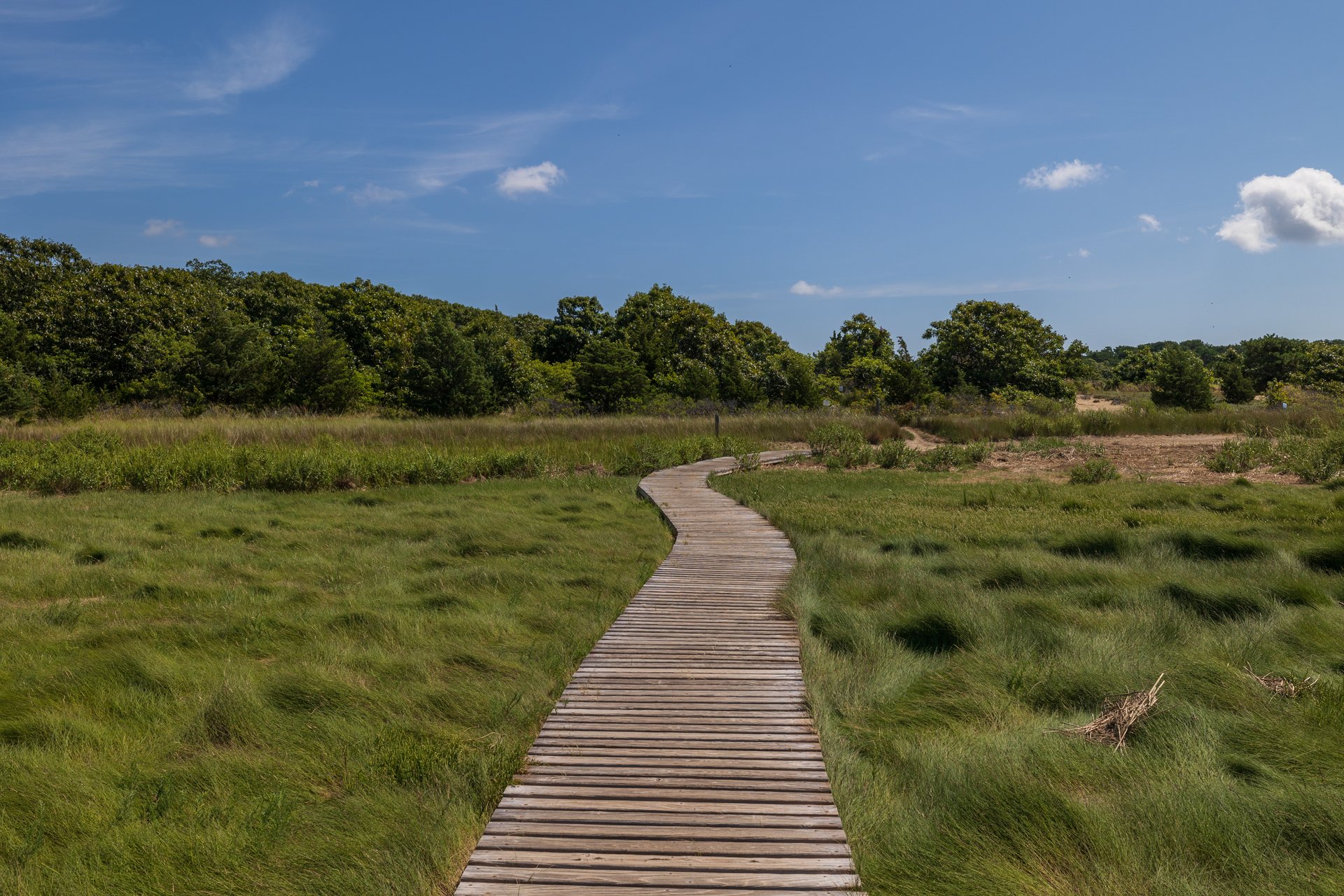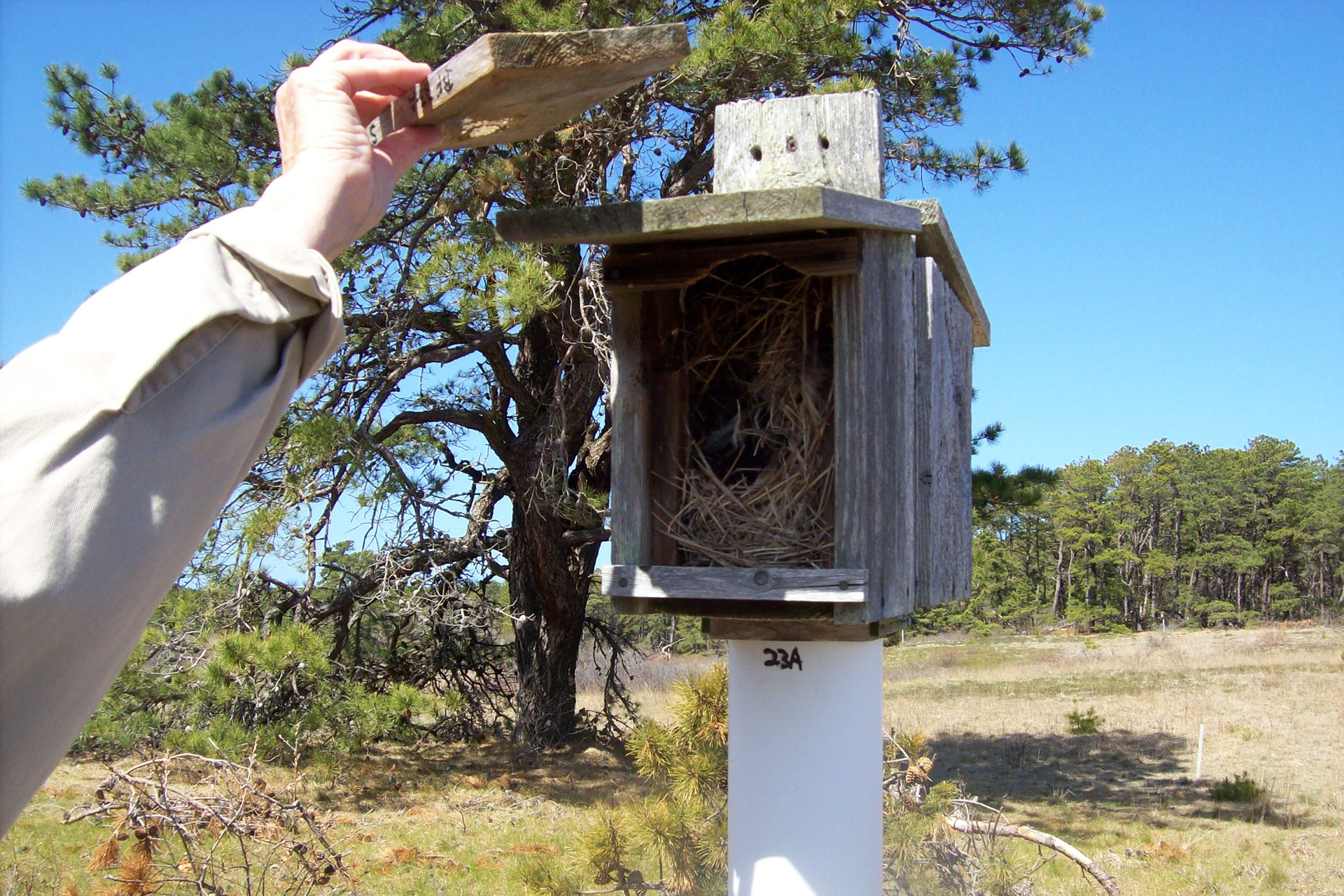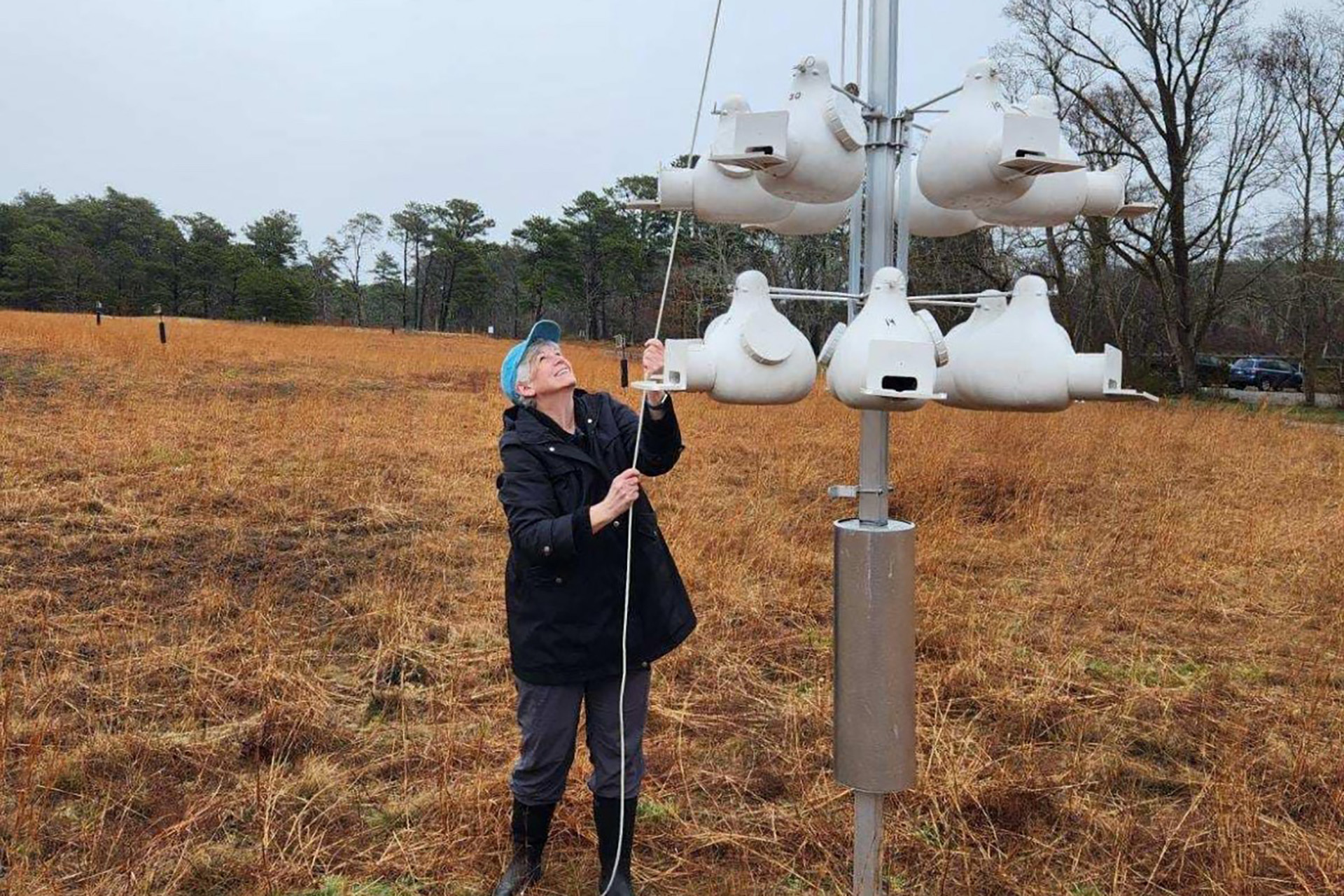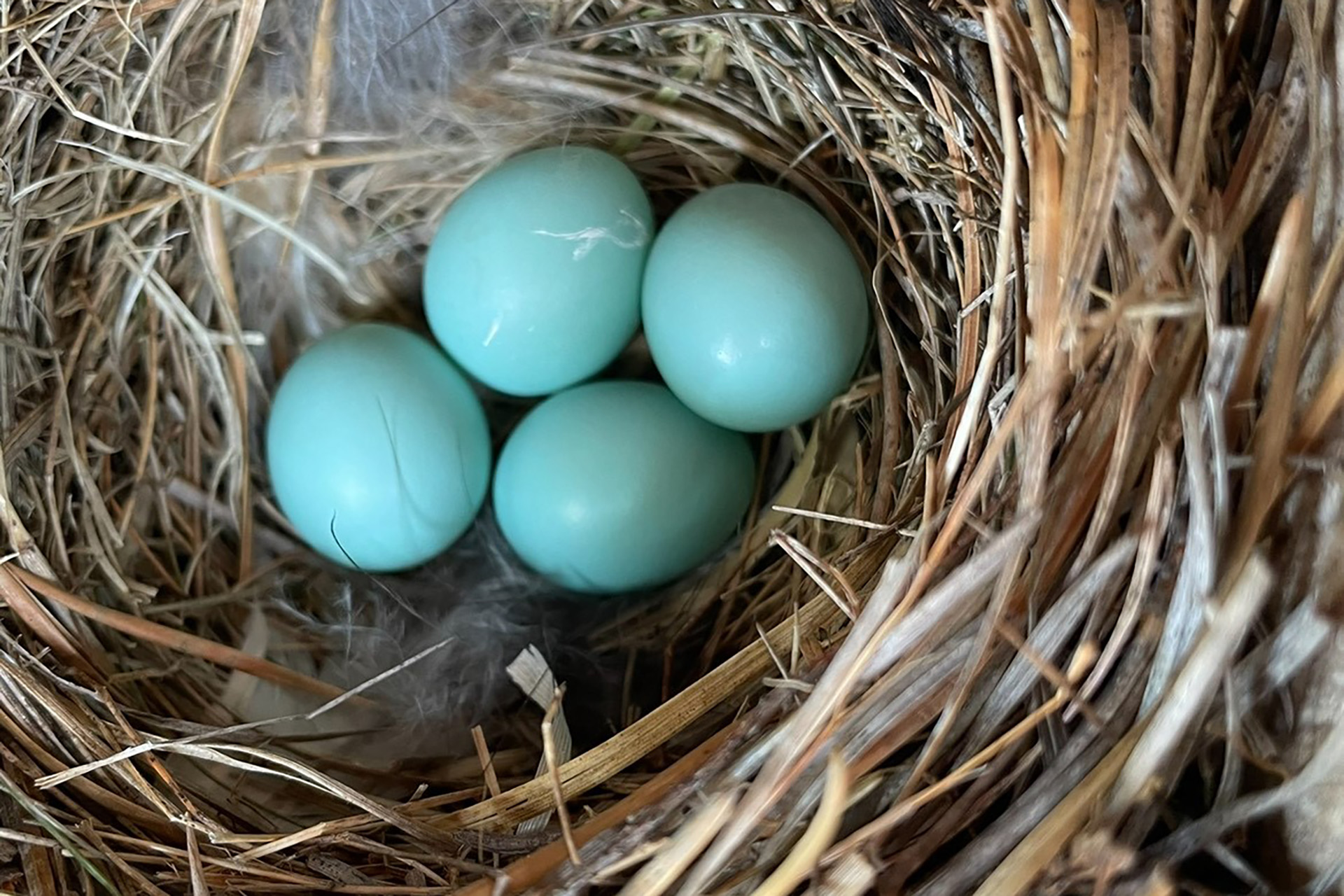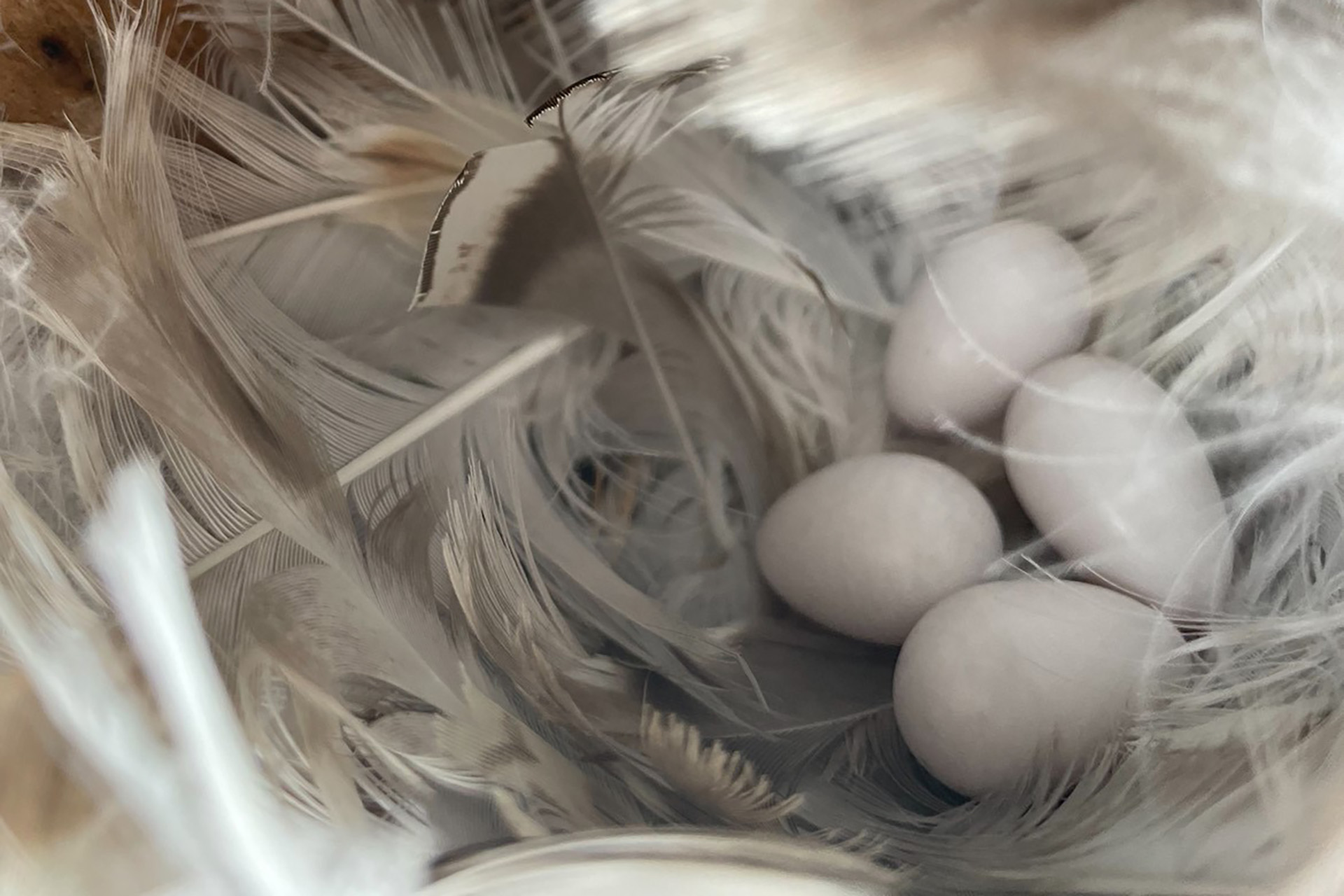The term “empty nest” resonates for many parents in August as they drop off their children to college. But for Mass Audubon volunteer Lois Bartels, who monitors bird nest boxes at Wellfleet Bay, the term has a more literal meaning. For 18 weeks, Lois and fellow volunteer Warren Mumford document nesting successes (and failures) of birds that use the boxes scattered across the sanctuary.
Several species of birds need holes, or cavities, in trees for nesting and shelter. Because there often aren’t enough natural cavities to go around, we provide nest boxes as an alternative. We monitor their use each year and the data we collect is shared with Cornell’s NestWatch, a nationwide nest monitoring program.
The season ends in August, when the baby birds have fledged and leave their home. It’s a wistful time for Lois, but instead of feeling emptiness, she feels a sense of wonder and thankfulness. In her own words, Lois shares her experiences and what this community science project means to her.
Becoming a Nest Box Monitor
It was April and my friend Warren reached out and asked “Hey, what would you think about volunteering with me at Wellfleet Bay to monitor nest boxes? It’s only a few hours a week.” What did I think? I thought April on Cape Cod is cold, windy, wet, and raw—a time to hunker down and stay indoors! But Warren was enthusiastic and convincing. “Sure,” I said, “I can spare a few hours a week.”
There is required reading to become a nest box monitor, mostly about keeping the birds safe and less stressed. Once you familiarize yourself with procedure and handling, a test must also be passed. We monitor 40 nest boxes as well as 24 Purple Martin gourds, each week, from mid-April to August. In addition to the actual counting during the field season, time is also spent entering the data into NestWatch.
Home Sweet Home
The fun part is seeing what birds make the boxes their home. We typically have 3-4 different species using our nest boxes. Our earliest nesters are the Eastern Bluebirds; their first nest fledged the first weekend in June. I will never get over my amazement that from hatchling to beautiful fully feathered bluebird youngster takes only EIGHTEEN days!
Black-capped Chickadees decorate their cozy nests with moss and their tiny eggs remind me of jelly beans. American Tree Swallows, most of our bird box occupants, take nest building to the next level. They lay down small sticks and pine needles then decorate with feathers. They are typically white feathers, which makes me think they must go out to the beach and gather gull feathers. Some arrangements are extravagant, and some seem like an afterthought.
The 24 Purple Martin gourds had almost complete occupancy this season. But we didn’t see any wrens this year.
Counting Birds Before (and After) They Hatch
Part of our duties are to track when and how many eggs are laid and then how many tiny, fragile hatchlings emerge. How they survive to fledging is truly a wonder of nature. Opening the nest box door and peeking in to see their mouths agape is thrilling; but we try to be very quick with our surveys to minimize stress to babies and parents alike.
Then comes the day we open the nest box or gourd and they are empty; the fledglings have made their way into the world. We are always left hopeful for their success, as several of the species are long distance migrants like the Purple Martins. I am also left thankful for these volunteer opportunities. I can always count on my experiences with Mass Audubon to offer a shared joy with new friends in the outdoors and the chance to contribute to a better understanding of birds and other creatures.
Counting on You for Community Science
This project is just one of several community science projects at Wellfleet Bay that relate to wildlife monitoring, research, restoration, and conservation on the Outer Cape. Many of them focus on endangered or threatened species, or those that have declining populations. And all of them rely on volunteers for success.



